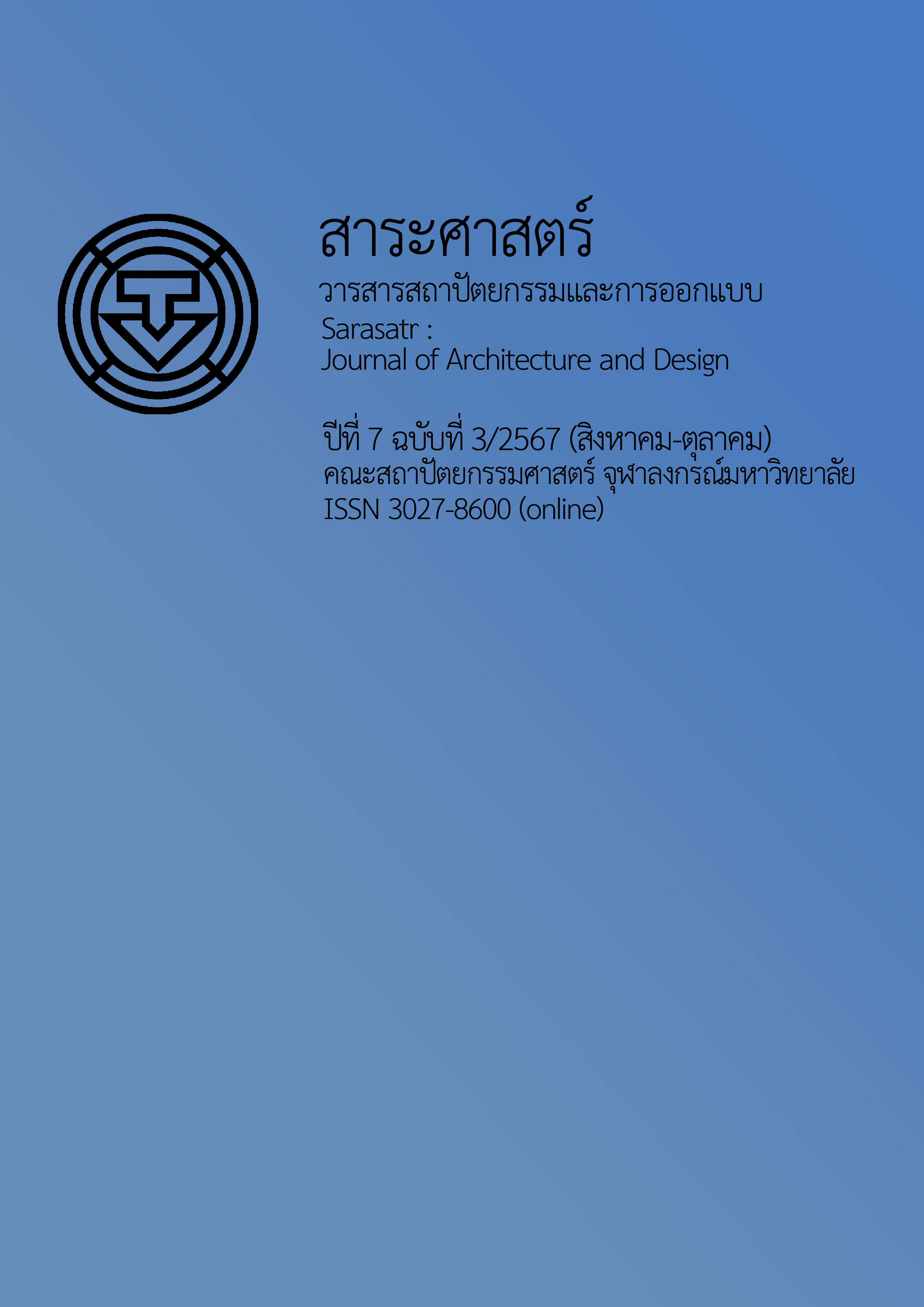The Participatory Design for Klongkrachang Cultural Street, Phetchaburi Province
Main Article Content
Abstract
Phetchaburi is an ancient city with a long history that dates back to the Dvaravati period. It was one of the most important trading ports during the Ayutthaya era, making it enrich with wealth and cultural diversity. “Phetchaburi crafted arts” have been known for their uniqueness and passed down through generations. However, the cutting of Petchkasem Road to bypass Phetchaburi City, along with the expansion of urban development away from the old town area, has resulted in several challenges. These include the reduction of the original commercial areas, a decline in the local economy, and an increase in the number of older residents in the community. As a result, the area's way of life may seem less vibrant. This directly affects the cultural heritage of Phetchaburi Old City. Many cultural heritage items lack proper inheritance, restoration, and conservation. To address this, the researcher chose the area around Khlongkrachang Street, a small but historically significant road in the heart of Phetchaburi Old Town, as a case study. This area is rich in traditional cultural heritage, evident in its architecture, art, and traditional ways of life. However, it faces the problems mentioned above. Fortunately, there is a growing awareness among leaders and community members about the importance of restoring cultural heritage and revitalizing the community's traditional way of life.
The objectives of this article are: 1) to study the participatory design process, using the case study of The Participatory Design for Klongkrachang Cultural Street, and 2) to study the factors that facilitate participation by using the Participatory Action Research (PAR) method through the planning process in community conservation and restoration. This includes site surveys, interviews with representatives of agencies and communities in the old town of Phetchaburi, Public forums, Focus Group, and organizing activities with the community.
The study found that the planning process for community conservation and restoration in the form of "Creating a Design Approach for the Khlongkracheang Cultural Street" was satisfactory to all parties involved, especially the community members. The success factor was the creation of participation at every step, from jointly surveying, brainstorming, designing, experimenting, and decision-making. Key factors facilitating participation included the community's shared issues regarding cultural heritage in the area, with mutual learning and exchange through various processes and tools. This helped the community understand the problems and recognize the importance of their cultural heritage, leading them to form groups to restore, care for, and manage the area independently. They could push the project with local and governmental agencies, gaining budget support for tangible outcomes. This study's results can serve as a model for cultural heritage restoration in other old communities with similar contexts.
Article Details
References
เจิมศักดิ์ ปิ่นทอง. (2527). การระดมประชาชนเพื่อการพัฒนาชนบทในการบริหารงานพัฒนาชนบท. โอเดียนสโตร์.
ชูวิทย์ สุจฉายา. (2552). การอนุรักษ์เมือง. คณะสถาปัตยกรรมศาสตร์ มหาวิทยาลัยศิลปากร.
ปุ่น เที่ยงบูรณธรรม. (2555). พิพิธภัณฑ์มีชีวิตเมืองแม่ฮ่องสอน : รายงานฉบับสมบูรณ์. คณะวิศวกรรมศาสตร์ คณะเกษตรศาสตร์ และคณะเศรษฐศาสตร์มหาวิทยาลัยเชียงใหม่ - คณะศิลปกรรมและสถาปัตยกรรมศาสตร์ มหาวิทยาลัยเทคโนโลยีราชมงคลล้านนา วิทยาเขตภาคพายัพ.
วิรัช วนิภาวรรณ. (2530). ปัญหาอุปสรรคที่สำคัญของการพัฒนาชุมชน. โอเดียนสโตร์.
อคิน ระพีพัฒน์. (2525). การมีส่วนร่วมของชุมชนในการพัฒนาชนบทในสภาพสังคมและวัฒนธรรมไทยในการมีส่วนร่วมของประชาชนในการพัฒนา. ศักดิ์โสภาการพิมพ์.
Arnstein, S. R. (1969). A ladder of citizen participation. Journal of the American Planning Association, 35(4), 216-224.
GHC 10 years in the neighborhood. (2022). http://www.glasshousecollective.org/wp-content/uploads/2022/08/GHC-10-years-in-the-neighborhood.pdf
Project for Public Spaces. (2017). What is placemaking? https://www.pps.org/article/what-is-placemaking


